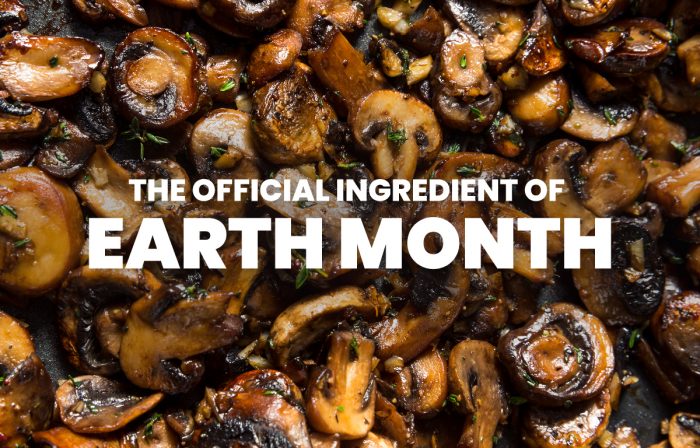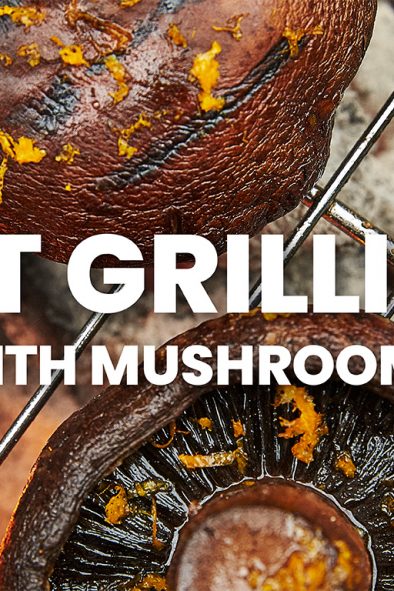Articles
Mushrooms are Earth’s Favorite Ingredient

When it comes to sustainable eating, mushrooms are the ultimate MVP. Not only do they add savory umami flavor and rich meaty texture to your favorite dishes but their growing process has a remarkably low environmental footprint. In fact, according to a study by SureHarvest, mushrooms are considered “one of the most sustainably produced foods in the U.S.,”1 making them a perfect ingredient to celebrate Earth Month.
Small Footprint, Big Impact
Mushrooms are grown using minimal resources, so growers are able to produce millions of pounds of mushrooms on just a few acres of land.1 Soil used to produce mushrooms is made of pasteurized composted materials transforming what would be waste into nutrient-rich food. Producing one pound of mushrooms:
- Requires only 1.8 gallons of water1
- Generates only 0.7 lbs of CO2 equivalents1
- Requires only 1.0 KWH of electricity1
Once mushrooms are harvested, this soil can be repurposed in multiple ways. One way it is used is as potting soil, enriching it with beneficial nutrients and organic matter to support enhanced plant growth. This full-circle approach minimizes waste, enhances soil health and contributes to a more sustainable food system.
Healthy on the Plate, Gentle on the Planet
Mushrooms aren’t just good for the earth, they’re a superfood source of nutrients, too. A rich umami flavor and meaty texture make them a perfect plant-based pairing with vegetables, grains and proteins.
Mushrooms have a low carbon footprint, making them a great choice for anyone looking to make more sustainable food choices. Whether blended into burgers or enjoyed in plant-forward meals, they’re an easy way to help reduce your carbon footprint.
Celebrate Earth Month with Mushrooms
Incorporating more mushrooms into your meals is a simple yet impactful way to support the planet for Earth Month and year-round. Their minimal environmental footprint make them a true Earth-friendly ingredient, worthy of being known as “The Official Ingredient of Earth Month.”
1The Mushroom Sustainability Story: Water, Energy and Climate Environmental Metrics 2017 study






Comments (1)
I live in the mushroom capital of the world 🌎 in Kennett Square Pennsylvania! Love them!